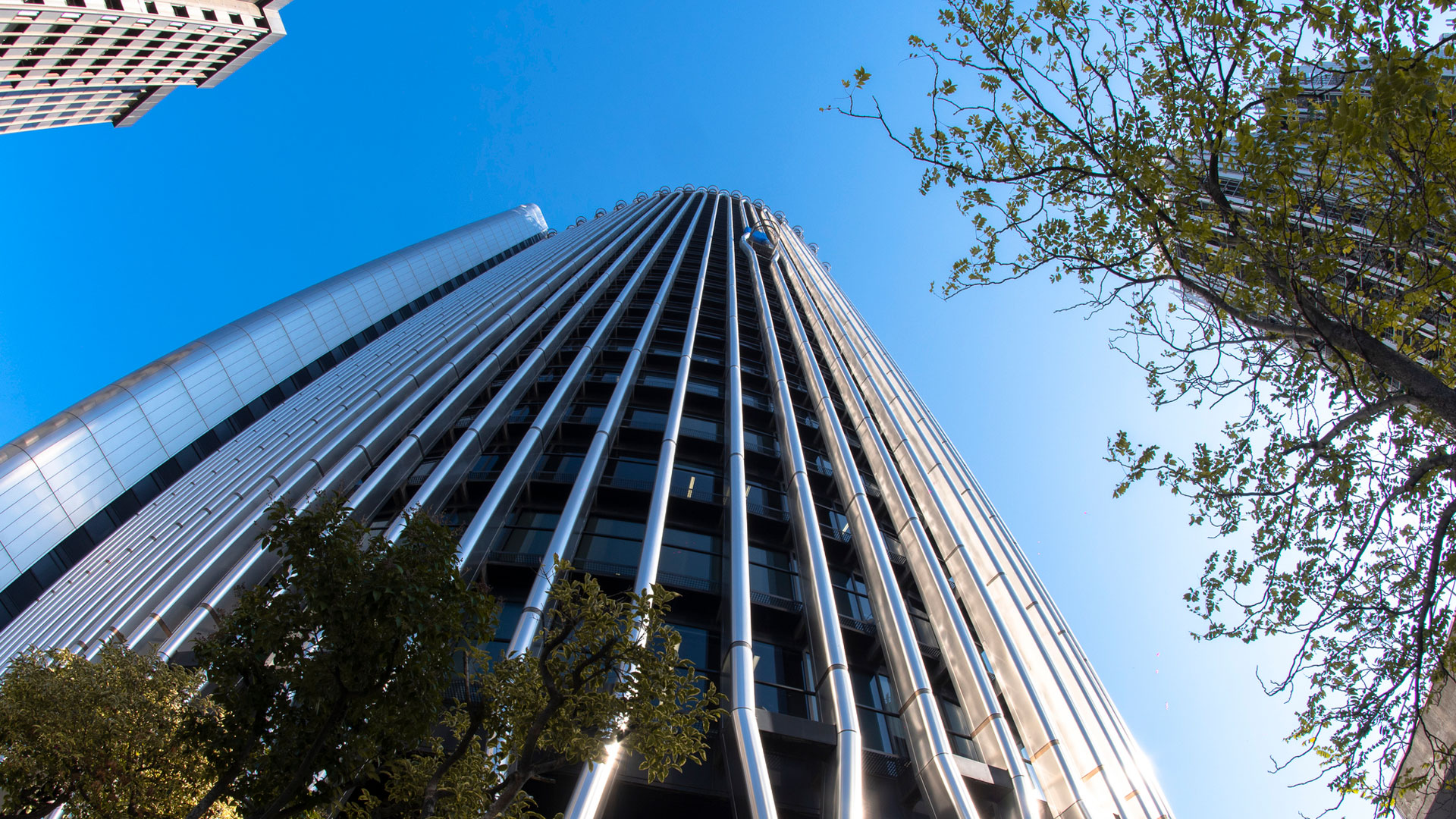10.04.2024 | The Hydropower Tour de Suisse – Aarekraftwerk Klingnau AG
A refuge for birds, fish and beavers
Aarekraftwerk Klingnau has been producing electricity around the clock for 89 years. During this period, the Klingnau reservoir has developed into a natural paradise. It is now a breeding, resting and wintering ground for rare bird species and has become an official, international water protection area and migratory bird sanctuary.
The chirping never stops. A wide variety of bird species loudly proclaim their spring fever in the trees and shrubs around Aarekraftwerk Klingnau. Operations Manager André Kaufmann pulls out the key to a separate area located south of the access dam to the power plant site. ‘This site is cordoned off to provide birds, amphibians and other small animals with a safe haven.’
One’s gaze falls on a hill of compact special sand as high as a tour bus and resembling an oversized sand castle. ‘In the spring before the nesting season, we cut a piece off at the front of the hill,’ explains André Kaufmann. ‘We want to attract sand martins with the now clean, vertical wall.’ The power plant manager has not yet found any nesting burrows. Kathrin Hochuli, Co-Managing Director of BirdLife Aargau, the association of Aargau nature and bird protection organisations, explains: ‘Sand martins prefer to nest on undercut slopes of uncorrected water. It also took them a few years to accept the specially prepared hill as a nesting site in the Rietheim floodplain area.’ The bird conservationist therefore predicts that the chances of breeding success on the protected power plant site are good in the medium term.
Power plant in continuous operation for 89 years
In the summer of 2018, the operating company Aarekraftwerk Klingnau AG (Axpo 60%, AEW 40%) received the concession for a further 60 years of electricity production retroactively from 2015. In July 1935, four years before the outbreak of the Second World War, the hydropower plant was commissioned with an installed capacity of 42.9 MW. For almost 90 years now, the same Kaplan turbines in the three machine groups have been producing an average of 210 million kilowatt hours (kWh) of CO2-free electricity per year around the clock, enough to supply 50,000 four-person households.
The weir, over which a bike path leads, has four openings. ‘Even during the worst high water, it can easily be drained away through three openings,’ says André Kaufmann, climbing three floors to the upper weir bridge, which is not open to the public. The exclusive panoramic view of the Klingnau reservoir is breathtaking. Beneath your feet, the water roars and rushes into the depths and flows towards the Rhine, clearly visible through the large cracks in the old wooden slats. In the impressive 140-metre-long hall, you can still see true blacksmith work. ‘The wind winches of the weir openings are the originals. We operate each one remotely from the engine room. If necessary, we could also crank it by hand.’
BirdLife Aargau as a close companion
As is usual in concession procedures, the power plant operators have committed to various ecological replacement and compensatory measures. Bird conservationist Kathrin Hochuli has been involved in the planning and implementation of the measures since the first joint meeting of the group in 2013. ‘We have so far had 14 meetings. For us, it has always been about tackling challenges pragmatically and helping to make the measures successful.’ In addition to BirdLife, the group involved also included representatives from fishing and water sports clubs, neighbouring communities and other stakeholders.
The total of nine replacement and compensatory measures included in particular the construction of a new side channel below the Beznau hydropower plant, an additional soakaway, as well as the revitalisation of the soakaways and the Leuggernbach river. Most recently, the section between the Klingnau power plant and the mouth of the Rhine was upgraded with a new bank structure. Nine large bays with stone groynes were set up at distances of around 50 metres, so that birds can settle close to the water without being disturbed.
Bank maintenance is an important matter for power plant operators. Four employees maintain the bank upstream to the surge pool, the confluence of the Aare, Reuss and Limmat, and downstream to just before the mouth of the Rhine. A total of 24 employees are responsible for the operation and maintenance of the Beznau and Klingnau hydropower plants as well as the Stroppel small hydropower plant near Untersiggenthal.
Disposing of waste that accumulates on the power plant screen is also part of the concession-related maintenance work. ‘If you only consider driftwood, you’re forgetting about the increase in household waste in the Aare water,’ emphasises André Kaufmann. ‘With this task, we make a direct contribution to cleaning the river water.’ The number of filled waste bins has increased in recent years and reached its peak during the time of the coronavirus pandemic. ‘It is often forgotten that the power plant operators bear all of these disposal costs themselves.’
Counteracting sedimentation together
Despite the original schedule, the implementation of the replacement and compensatory measures is not yet fully complete. ‘What is still needed is sediment dredging in an area measuring around 8,000 square metres to create a new habitat for aquatic and wading birds,’ says Co-Managing Director of BirdLife, Kathrin Hochuli. However, this is not due to a lack of willingness on the part of the power plant operators. André Kaufmann: ‘We are working closely with the canton of Aargau and leveraging synergies.’ In a separate project, the canton of Aargau aims to control the increasing sedimentation of the Klingnau reservoir due to sand and debris. The work will be driven forward together in 2024.
The three specially created observation platforms, which are also part of the replacement and compensatory measures, are of less use to the birds and intended more for the birdwatchers travelling from far away. Kathrin Hochuli: ‘They complement the offerings of our BirdLife Nature Center Klingnauer Reservoir. We are delighted by the interest and the increasing number of visitors.’
However, one of the implemented measures, the breeding aid for common terns, was not successful. This consisted of a raft with a special brood protection roof that was destroyed due to the flood last year. Since then, ornithologists have been researching a new mobile solution to help this compensatory measure achieve a happy ending.
Protecting the switchgear from large birds
André Kaufmann points to the outdoor switchgear located directly behind the engine room. ‘The switchgear and its outgoing feeder panels are currently being relocated to a new container building.’ This is safer for the birds and operators. ‘Larger animals in particular can cause a short circuit by flapping their wings.’ This would be fatal for the bird and result in a risk of power outage for the regional population. ‘Once this upgrade is complete, we will fully dismantle the outdoor switchgear.’ This has another advantage: ‘We will then move the public path to the other side of the engine room, which is safer for everyone involved.’
Investments for birds, fish and beavers
Beavers can be found all around the Klingnau reservoir, which makes the maintenance of the dam and bank fortifications quite time-consuming. There is a fish ladder on the side of the weir for the annual migration of fish to spawn. However, in mid-March 2024, an order from the Aargau Cantonal Department of Construction, Transport and Environment (BVU) made people’s ears prick up. To stop the spread of the invasive fish species round goby, the cantonal authorities put a stop to the fish migration for at least a year. The aim is to halt the fish-spawn-eating intruder before it moves upstream towards the Aare, Reuss and Limmat. ‘Our final Aare dam naturally plays an important protective role here,’ explains the operations manager. A new fish ladder will be equipped with a migration barrier against gobies. ‘We will be able to offer a solution to this issue by 2026,’ says André Kaufmann. ‘Regardless of whether it’s a bird, a fish or a beaver – we and our team are passionate about these concession tasks.’
Facts and figures:
Operating company: |
Aarekraftwerk Klingnau AG (Axpo 60%, AEW 40%) |
Installed capacity: |
42.9 MW |
Turbines: |
3 Kaplan turbines supplying 14.3 MW each |
Average annual production: |
210 million kWh |
Average flow: |
650 m3/s |
Commissioning: |
7 July 1935 |
Water surface altitude: |
318.4 metres above sea level |
Reservoir area: |
1.5 km2 |
Reservoir length: |
approx. 3 km |
Max. reservoir width: |
450 m |
Tour de Suisse of hydropower
This article is part of the series "Tour de Suisse of hydropower". Previously published:
Stabilising the electricity grid with water from the valle mesolcina
Modern Axpo Power Plant produces energy for 14’000 households





